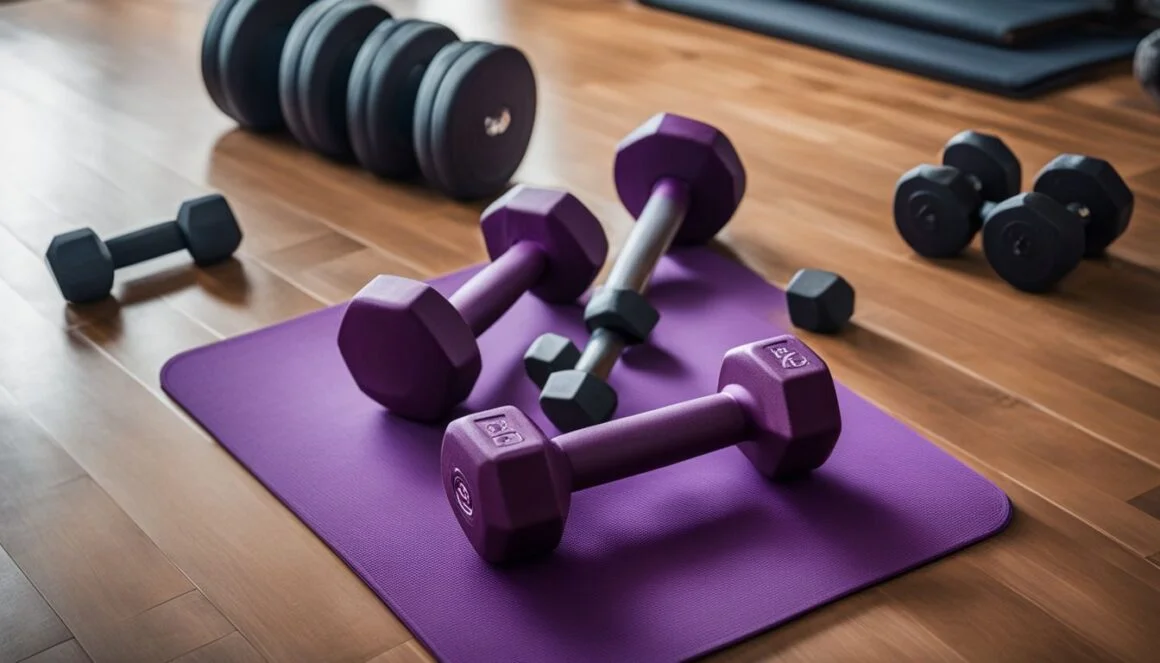Struggling to maintain mobility and independence as you age? According to the Centers for Disease Control and Prevention, 61 percent of adults aged 65 and older experience limitations in performing basic actions.
This blog post provides insight on how incorporating Exercises for Functional Fitness into your routine can help combat these age-related physical challenges. Let’s discover the secrets of maintaining vitality in advancing years!
Understanding Mobility and Functional Fitness
Mobility and functional fitness are key for your health. Mobility means you can move without pain or struggle. It is tied to the range of motion in our joints and muscles. Without good mobility, everyday tasks become hard.
Functional fitness involves basic actions we do every day. This includes things like sitting, standing, and picking up objects. When we exercise for functional fitness, these tasks get easier to do! These exercises train your body to be strong where it needs most.
This way, you can do what you want every day with ease.
The Importance of Mobility for Aging Independently

As we get older, moving well matters more and more. Mobility is key to aging with freedom. It helps in doing everyday tasks at home, work or the store. It lets us live on our own for longer.
61 percent of adults aged 65 and over find basic actions hard to do without good mobility. This can lead to accidents and injuries at home.
Less movement also leads to joint problems like poor function and disease. These issues often increase pain, which can limit movement more. As a result, a person becomes less fit and may lose independence.
Aging well means staying active as much as possible. Walking, dancing, or gardening keep the body in motion. Functional fitness exercises help, too! They strengthen muscles for normal movements such as sitting down or lifting things.
Being strong means fewer limits on physical independence – now that’s really important! So let’s move it from today itself because being mobile aids in independent aging!
Easy Exercises to Enhance Mobility and Maintain Independence

Improve your mobility and maintain independence with these simple exercises. Stay active and enjoy a higher quality of life by incorporating these movements into your daily routine.
Read more to discover how you can enhance your functional fitness.
Ankle Alphabet
The Ankle Alphabet is a great workout for older adults. This exercise has many perks:
- It helps to make the ankle move better.
- It keeps your joints working well.
- This exercise is a key part of staying independent.
- It helps you do things each day with ease.
- Doing this exercise can help stop joint pain and disease from setting in.
- Sit on a chair and pick one foot off the ground.
- Draw each letter of the alphabet in the air with your foot.
- Try to make the letters as big as you can with your ankle’s range of motion.
- Repeat with the other foot.
Seated Butterfly Stretch
The seated butterfly stretch is an excellent exercise for seniors. This move targets the thighs and groin. It makes these parts more flexible. Here are the steps:
- Sit up tall on a mat.
- Your feet should be together in front of you.
- The soles of your feet should touch.
- Let your knees drop to the sides.
- Keep your back straight and chest up.
- Hold your feet with your hands.
- Lightly press down on your legs with your arms.
- Try to get closer to the floor with each breath.
Squats
Squats are important for maintaining mobility and independence as we age. They help strengthen the muscles in our lower body, increase flexibility, and improve balance and stability. Here are some key benefits of squats:
- Squats are functional exercises that mimic movements we do every day, such as sitting down and standing up from a chair or picking up something from the floor.
- Performing squats regularly can help improve hip and knee joint mobility, reducing the risk of joint dysfunction and degenerative joint disease.
- Squats engage multiple muscle groups including the quadriceps, hamstrings, glutes, and core muscles.
- Stronger leg muscles from squats contribute to better overall balance and stability in daily activities.
- Squats also help maintain bone density by putting stress on our bones, which stimulates bone growth and reduces the risk of osteoporosis.
- Stand with your feet shoulder – width apart, toes pointing slightly outward.
- Engage your core muscles by pulling your belly button in towards your spine.
- Keep your chest lifted and shoulders relaxed.
- Slowly bend at your hips and knees while keeping your weight on your heels.
- Lower yourself as if you’re sitting back into a chair until your thighs are parallel to the floor or as low as you can comfortably go without pain or discomfort.
- Push through your heels to lift yourself back up to standing position.
Single-Leg Stance
Single-leg stance is an exercise that strengthens the ability to remain stable during tasks that require using one leg at a time. This exercise helps improve balance and stability, which are important for maintaining independence as we age. Here’s how to perform single-leg stance:
- Stand upright with both feet together.
- Lift one foot off the floor, holding it as much as 6 inches from the ground.
- Try to hold this position for at least 30 seconds.
- Switch legs and repeat the exercise.
- Use a sturdy surface for support if needed.
Essential Functional Movements for Older Adults

Older adults can benefit from incorporating essential functional movements into their exercise routine, such as the squat, lunge, pushup, row, and wood chop.
The Squat
The squat is important for daily routines like sitting in a chair or picking up something from the floor.
- Squatting movements are important for daily routines such as sitting in a chair or picking up something from the floor.
- Squats are foundational for lower – body strength and can be modified based on fitness level.
The Lunge
The lunge is a beneficial exercise for maintaining mobility and independence in older adults. It strengthens the legs and improves balance, making everyday tasks like walking and climbing stairs easier. Here are the steps to perform a lunge correctly:
- Stand with your feet hip – width apart.
- Take a big step forward with one foot, keeping your torso upright.
- Lower your body by bending both knees until your front thigh is parallel to the floor.
- Push through the heel of your front foot to return to the starting position.
- Repeat on the other side, alternating legs.
The Pushup
The pushup is an important exercise for maintaining strength in the chest muscles, which is crucial for lifting and carrying objects. Here are some important facts about the pushup:
- Pushups are one of the five primary movement patterns that are important to perform.
- They are associated with maintaining mobility and independence in older adults.
- Pushups can be modified to suit different fitness levels, such as incline pushups or standing pushups against a wall or countertop.
- Incorporating pushup exercises into a routine for functional fitness is highly recommended.
- The article does not provide specific statistical data about pushups, but it emphasizes their importance for overall physical health and functioning.
The Row
The Row exercise is important for balancing the muscles in the body and is beneficial for activities like pulling open doors. The Row can be performed with a resistance band or cable machine at the gym. Floor angels can also be added to enhance shoulder joint mobility.
The Wood Chop
The Wood Chop is an exercise that simulates rotational movements used in everyday tasks. It can be done with a resistance band or cable machine at the gym. The exercise helps to improve core strength, stability, and coordination. It targets the muscles in the back, shoulders, and arms. The Wood Chop is important for activities such as putting on a seatbelt or shoveling snow. Incorporating this exercise into your routine can enhance mobility and maintain independence.
The Benefits of Functional Fitness Exercises
Functional fitness exercises offer a multitude of benefits for older adults. By incorporating these exercises into their routine, they can enhance their mobility, stability, coordination, and flexibility.
Functional fitness exercises focus on movements that mimic everyday tasks, such as squatting, lunging, pushing, pulling, and rotating. Performing these movements helps improve strength in major muscle groups and increases joint range of motion.
Regularly engaging in functional fitness exercises can also reduce the risk of injury by improving balance and postural stability. Additionally, these exercises support overall physical independence and make it easier to perform daily activities with ease.
With the help of functional fitness exercises, older adults can maintain their freedom and enjoy an active lifestyle for years to come.
Conclusion
In conclusion, maintaining mobility and independence is crucial for older adults to live a fulfilling and active life. By incorporating functional fitness exercises into their daily routine, such as squats, lunges, pushups, rows, and wood chops, they can enhance their physical abilities and perform everyday tasks with ease.
These exercises improve strength, balance, coordination, and flexibility which are essential for healthy aging. So let’s stay active and keep moving to maintain our mobility and independence as we age!
FAQs
Frequently Asked Questions (FAQs)
1. What is functional fitness?
Functional fitness focuses on exercises that aim to improve strength and stability required for everyday activities. It emphasizes functional movements that engage multiple muscle groups and require coordination and flexibility.
2. What is resistance training?
Resistance training involves performing exercises using external resistance, such as weights or resistance bands, to stimulate muscle growth and muscle strength. It helps improve muscle mass and range of motion.
3. Are there specific exercises for seniors?
Yes, there are various exercises tailored specifically for older adults and seniors. These exercises, often referred to as functional exercises for seniors, focus on improving mobility, core strength, and overall functional fitness.
4. What is functional training?
Functional training is a type of exercise that replicates and enhances movements performed in daily life. It aims to improve functional fitness by targeting specific muscle groups and increasing overall strength and stability.
5. How can functional exercises benefit seniors?
Functional exercises can greatly benefit seniors by helping them improve mobility and independence. These exercises focus on strengthening muscles required for performing daily tasks, such as bending, squatting, and upper body movements.
6. Are there any specific exercises for functional fitness?
Yes, there are numerous exercises that fall under the realm of functional fitness. Examples include lunge variations, squat variations, elbow planks, and mobility exercises that target different muscle groups and improve overall functional strength.
7. How can I improve my mobility?
To improve mobility, it is important to incorporate exercises that focus on increasing range of motion, flexibility, and strength. Functional exercises, such as squats, bends, and upper body movements, can help improve mobility.

